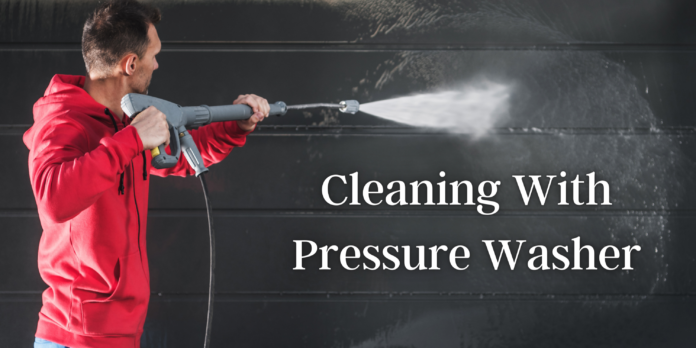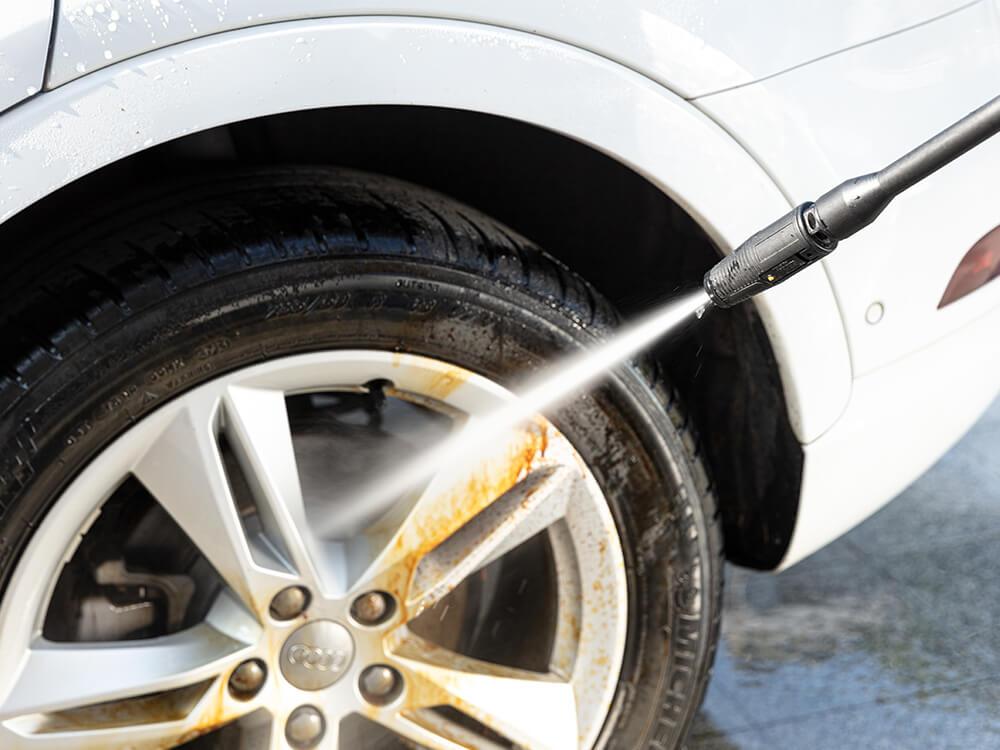Pressure washing cars, outdoor equipment, and buildings may be fun and useful to their appearance. To get the most out of your health, choose environmentally friendly methods. You will, however, need to collect and handle the water used in the method on a regular basis.
Contaminants in storm drain and bodies of water have the potential to harm plants and animals while also lowering water quality. Even dumping hot water that has not been treated with detergent might cause problems.
Prepare a strategy for cleaning surfaces of dirt, oil, grease, and other contaminants, and incorporate best practices into mobile and stationary power washing standard operating procedures.
This is the type of planning that can keep your pressure washing operations on schedule, save you money on cleaning and cleanup, and keep you out of trouble with stormwater pollution management regulations.
Visit https://giraffetools.com/collections/pressure-washer to make a more informed selection.
booklet of instructions
To familiarize yourself with pressure washing equipment, read the instruction handbook and test the unit on a small area before beginning the main operation. Because a pressure washer’s scouring action is so powerful, if you don’t know how to use it correctly, you risk ruining paint, walls, and delicate surfaces.
To remove cobwebs, dust, and grime, keep the pressure between 1500 and 1800 psi. Gradually raise the pressure to remove loose paint, but do not exceed 2500 psi; too much pressure may harm the surface.
Select the appropriate nozzle.
Most experts recommend yellow (15-degree) or green (25-degree) fan nozzles for pressure washing external painted surfaces, white (40-degree) nozzles for washing windows, and black (65-degree) nozzles for mixing water and chemicals.
Weatherproof caulk may be used to fill cracks and holes on the exterior. Before washing the wall, allow enough time for the product to dry. Cover exterior lights, switches, and electric outlets to avoid electrocution.
Divide the walls into sections.
Divide walls into sections designated by corners, windows, and downpipes for even cleaning, then wash from the top down with long strokes.
Choose an all-purpose cleaning solution that is ecologically friendly and has the least amount of environmental effect.
Choose an environmentally friendly, all-purpose cleaning product with the least amount of environmental impact.
- Apply the solution to one area before moving on to the next level.
- Soak it for five minutes before rinsing it thoroughly with the power washer.
Keep the nozzle at a 45-degree angle and spray from a distance of at least 12 inches to prevent harming the walls. To raise the pressure, move the nozzle away from the surface.
Chemicals may be used (but only with care!)
It may be useful to add chemicals to particular applications. Experts caution, however, that utilizing pressure washers to apply chemicals to walls may ruin the color as well as the structure of the wall. If you’re going to use chemicals, make sure they’re pressure washer safe and that you’re using a black nozzle with a 50 psi pressure.
Allow the walls to fully dry before applying the sealant. Apply a water-repellent compound to any water stains after 24-48 hours to maintain good waterproofing and avoid future moisture issues.
If at all feasible, lower the water temperature.
Steam or hot water aren’t required for all cleaning methods. At ambient temperatures, water pressure cleaning may often accomplish the same results at a lower cost and with superior machine operator safety. The discharge of hot water is also prohibited in many places because it disrupts the temperature equilibrium in the receiving waterbody and may damage aquatic life. Permits often specify a temperature range within which the discharge is allowed.
Examine several cleansers and detergents.
Cleaning products labeled “biodegradable” or “non-toxic” conceal a great deal of intricacy. Although these descriptions provide the idea of safe use, they may not necessarily indicate “zero harm.” The term “biodegradable” refers to a cleaner that will not harm bacteria in a water treatment facility and will dissolve faster than ordinary cleaners.
Standard detergents, such as biodegradable cleansers, may damage fish and other aquatic life. Meanwhile, no commonly acknowledged definition of “non-toxic” exists, which might be misleading. Even “non-toxic” compounds may have a negative impact on water quality. Several towns have banned the collection and processing of water containing any kind of cleanser or detergent, including those promoted as “biodegradable” or “non-toxic,” in order to protect water quality.














